Over-exfoliation is more common than you would think. Not only is it caused by exfoliating too often, but it can also be a result of using exfoliating products that are too harsh for your skin. Either way, over-exfoliation severely compromises your skin’s natural protective barrier.
Symptoms of over-exfoliation include:
- Redness and irritation
- A burning sensation
- Dry patches and flakiness
- Small pimples and increased oil production
- Sensitivities to other skin care products that you used to be able to tolerate just fine
- A waxy and shiny skin texture that develops into cracking and peeling
As you can see, symptoms are varied. For this reason, it usually takes people a while to figure out that over-exfoliation is their problem. However, once they do, there are several steps that can be taken to heal over-exfoliated skin.
Stop Exfoliating
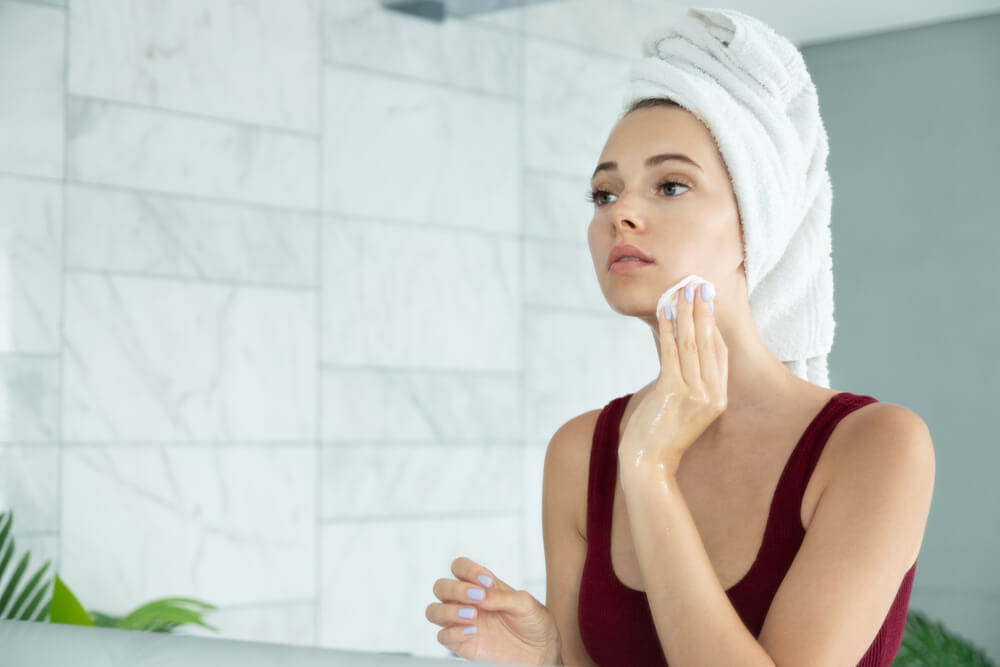
It may sound obvious to some, but the very first thing that you need to do if you think that your skin is over-exfoliated is stop exfoliating.
Take an exfoliation break for at least four weeks. Your skin regeneration cycle takes about a month, so your skin will continue to be extra sensitive during this time.
Switch to a Milder Cleanser
It’s not just exfoliation that can mess with your skin’s protective barrier – harsh cleansers can have this effect too.
Your priority right now should be allowing your skin to heal as quickly as possible, so this means swapping out any harsh cleansers for milder alternatives.
If you could do with a new cleanser, check out the Lionesse White Pearl 2 Step Cleansing Kit. It contains a milk cleanser and a toner, both of which will leave your skin feeling hydrated and loved after each cleanse.
Stay Away from Harsh Ingredients
Skin irritations are common for over-exfoliated skin. You may have been using the same product for years, but, if it contains even a small number of harsh ingredients, your skin will probably react to it.
To prevent this from happening, it’s time to take a stock check of all of those products in your skin care routine. Have a read through the ingredients list of each one, and make sure that they don’t contain any of the following:
- Parabens
- Formaldehyde
- Fragrance
- Sodium lauryl sulfate
- Triclosan
If you notice any of the above, it’s time to put them away until your skin has healed. However, you may also want to look into the ingredients that you’re using on your skin. Some of the above, such as parabens, have been proven to be extremely damaging to internal health.
Keep Your Skin Moisturized
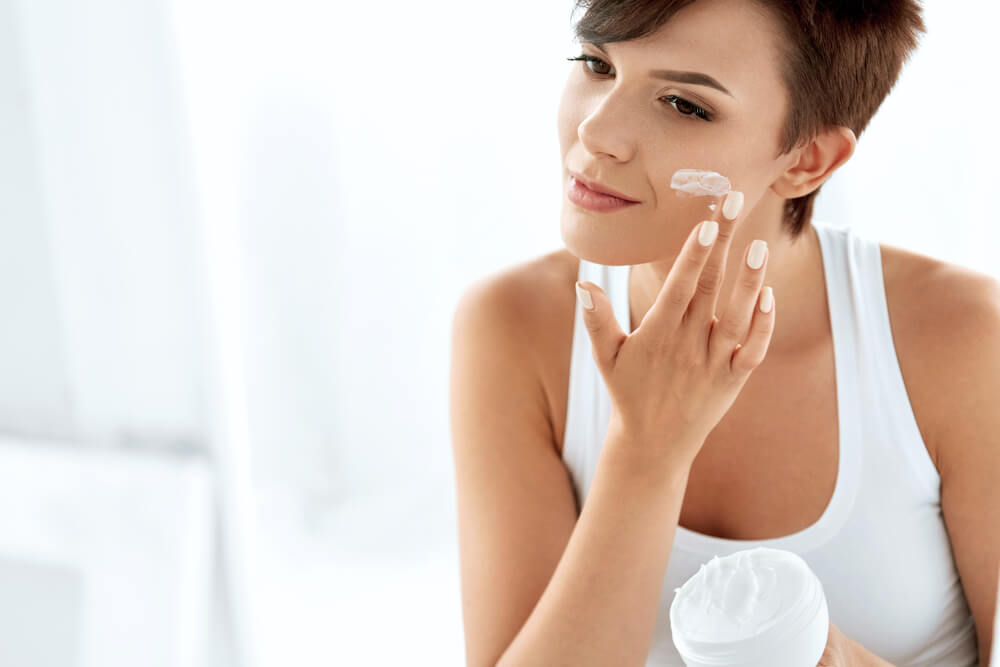
Remember how we said that over-exfoliating disrupts your skin’s protective barrier?
That barrier serves two main purposes:
- It keeps moisture locked in the skin, preventing it from evaporating. This keeps the skin hydrated and moisturized
- It prevents impurities and allergens from the environment around you from entering into your skin
With that barrier currently being out of action for a while, your skin is extremely vulnerable. The best way to keep it protected on a daily basis is by frequently moisturizing.
How does this help?
A moisturizer forms a thin protective barrier of its own.
How do you know if your moisturizer is one that will support skin healing?
Keep reading…
Look for Products Containing Restorative Ingredients
Ideally, the skin care products that you are using should contain ingredients that will leave your skin feeling healthy.
Here are some of the ingredients that your skin could really do with right now:
- Hyaluronic acid
- Peptides
- Ceramides
- Amino acids
- Antioxidants
Looking for a new moisturizer?
Give the Golden Sapphire Cream from Lionesse a try. It’s packed with multiple peptides and vitamins, making it a great formula for leaving your skin feeling soothed.
Add a Vitamin C Serum Into Your Skincare Routine

We’ve already discussed some of the most beneficial ingredients that you could be using on your over-exfoliated skin, and this includes antioxidants. There are several different antioxidants out there, but one of the must-haves is vitamin C.
What’s so great about vitamin C?
You probably already know that when your body is trying to recover from an illness, vitamin C is a huge help. Well, the same applies to your skin too!
When it comes to dealing with over-exfoliated skin, vitamin C is a must-have.
Due to its incredible powers, vitamin C has become one of the most popular skin care ingredients out there. This means that the vitamin can now be found in just about every skin care product you could imagine. So, which one is best for your over-exfoliated skin?
Well, creams are great, but if you really want your skin to benefit from the magic of vitamin C, then you need to be using a serum.
How do you find a good vitamin C serum?
Ideally, look for a formula that contains more than one form of vitamin C. This then allows your skin to double up on all of the vitamin’s benefits, bringing about positive results much faster.
One example of a product containing two types of vitamin C is the Lionesse White Pearl Vitamin C Serum. Use it three times a week on cleansed skin for best results.
Protect Your Skin from the Sun
Do you make sure that any exposed skin is fully covered with sunscreen before stepping out of the house?
If your answer is no, then this is going to be causing even more damage to your over-exfoliated skin.
As you know, UV rays are harmful to the skin in multiple ways. They destroy your skin’s protective barrier, along with those protein fibers that lie deeper within your skin. These are all things that you should be trying to strengthen, rather than weaken, if you want your over-exfoliated skin to heal as quickly as possible.
This makes daily sun protection a must. This applies to cloudy and overcast days as well as sunny days, since the sun’s UV rays can penetrate through thick cloud. In fact, this is often when the most amount of damage occurs, since many don’t realize how at-risk their skin still is when they can’t feel the heat of the sun shining down.
Ideally, use an SPF 30, and reapply this every two to three hours.
Are you guilty of often forgetting to apply a sunscreen?
If so, a moisturizer containing SPF may be just what you need. The only issue here is to make sure that you’re applying enough of it – a nickel-sized dollop is recommended to cover the face, but then you’ll also need more for your neck, shoulders, and any other areas of exposed skin.
Introducing Exfoliation Back Into Your Skincare Routine
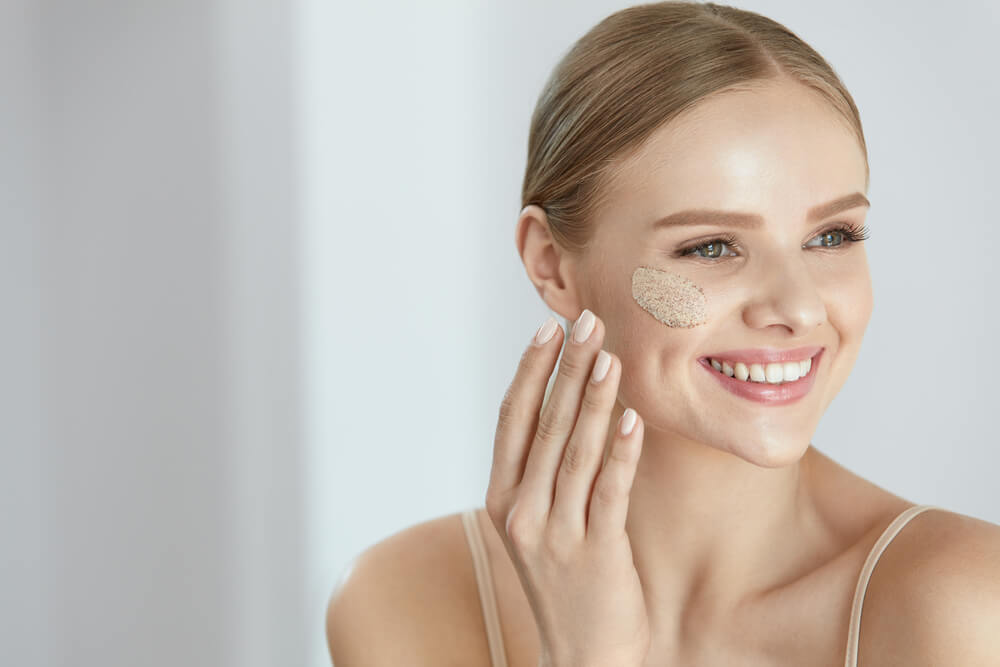
After four to six weeks, you should hopefully start to see signs of your skin improving. The symptoms of over-exfoliation should begin to die down, and your skin will slowly take on a healthier and brighter appearance.
At this point, you can start to consider introducing exfoliation back into your skin care routine.
Now, as you can imagine, you need to be careful doing this…
Move too fast and you’ll only end up over-exfoliating all of those new skin cells, leaving you back at square one once again.
So, to start with, once your skin has fully healed, only exfoliate it once a week. Do this for a few weeks, before increasing this up to twice a week. You shouldn’t need to increase it any more than this – bi-weekly exfoliation tends to be enough for all skin types. The exception is if you have sensitive skin – in this case, stick to exfoliating just once a week.
Of course, as mentioned, it isn’t just frequency of exfoliation that can lead to over-exfoliated skin…
The type of exfoliant you use matters too. Read on to learn how to choose the best exfoliant for your skin.
Choosing the Right Exfoliating Products for Your Skin
Exfoliants can be split into two main categories:
- Chemical exfoliants – these contain acids that dissolve away the glue-like substance that holds dead skin cells to the surface of the skin, allowing them to be washed off
- Physical exfoliants – these make use of an abrasive substance to physically scrub dead skin cells off the skin
Due to the word “chemical” in chemical exfoliation products, people often assume that this category is the harsher one. However, this is where you would be wrong…
Chemical exfoliants are actually much gentler than their physical alternatives. They don’t require you to scrub and pull at the skin, which often ends up causing more harm than good.
There are several chemical exfoliants out there, so pick one that best suits your skin type. For example, those with normal or combination skin may want to go for glycolic acid, which is known for being the most powerful. However, those with dry or sensitive skin would be better off with a milder formula, such as one containing lactic acid.
Either way, when using a new exfoliating product for the first time, remember to always perform a patch test first. This will ensure that your skin is able to properly tolerate the new product, saving you from having to deal with any face-wide reactions.
There’s no denying that it can be both difficult and frustrating to deal with over-exfoliated skin. This is amplified even further if it has taken you a while to realize that over-exfoliation is your issue, as it means that you would have continued to exfoliate your damaged skin. However, once you’ve figured things out, you can set your skin on the right track for healing. Learn how to support it to speed up the healing process, so that you can get your skin care routine, as well as your complexion, back to normal as quickly as possible.




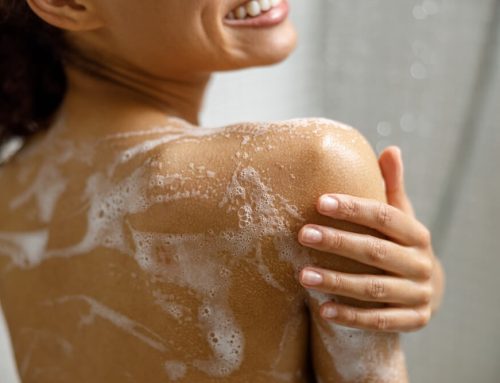


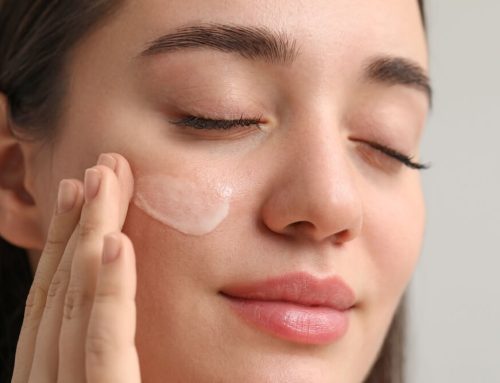

Leave A Comment